Oil Pulling – What is it and Why You Need To Do It
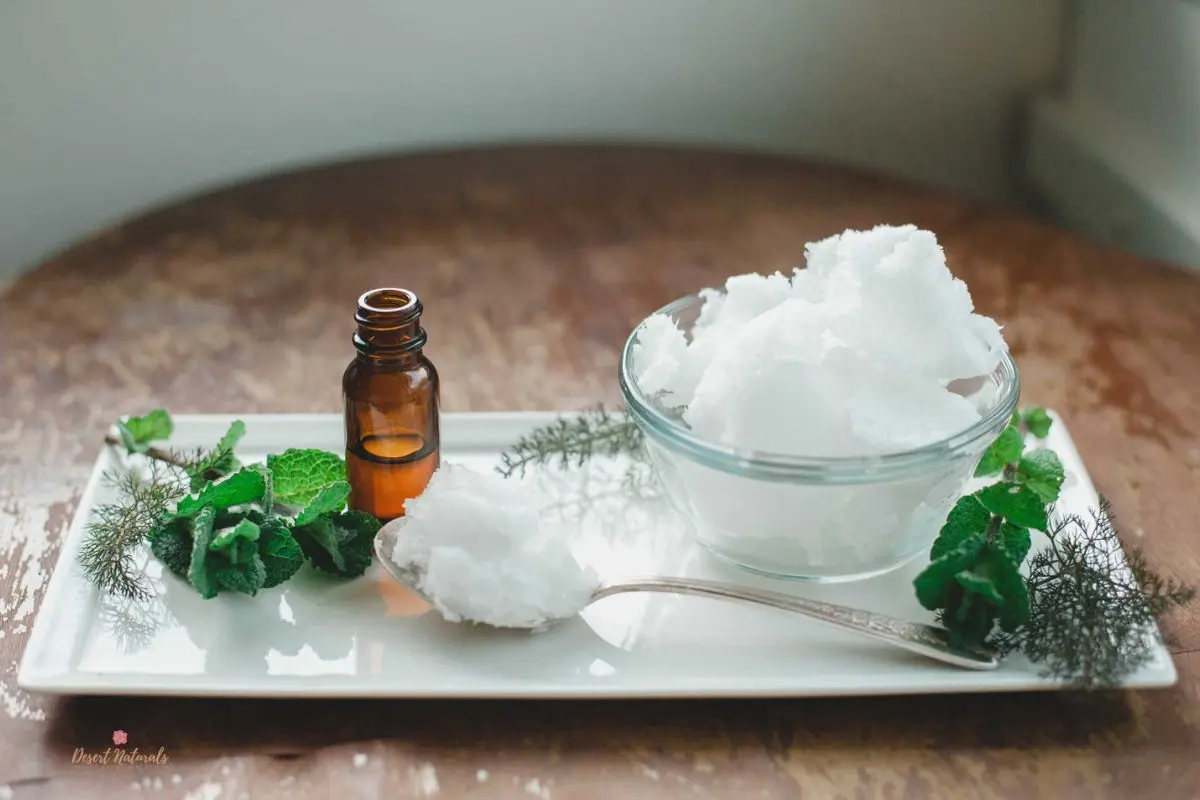
What is Oil Pulling?
Heard of oil pulling as a holistic health practice, and wondering if it’s something you should be doing? Oil pulling is an ancient hygiene practice that originated in India thousands of years ago. It involves swishing a spoonful of oil around in the mouth for about 15-20 minutes before spitting it out. The swishing action is said to dislodge particulate matter from the teeth and gums as the oil draws out impurities including bacteria, viruses and fungi, so as to cleanse and purify the mouth.
There is much debate over whether or not oil pulling has any validity as a dental hygiene practice. While supporters of oil pulling claim that it sanitizes the mouth, reduces the likelihood of gum disease, whitens the teeth and freshens the breath, oil pulling non-believers point out that you can just as easily achieve these results from toothpaste, mouth wash and other clinically supported dental hygiene products and practices, and that oil pulling may in fact be an unnecessary waste of time and money.
Pin for later
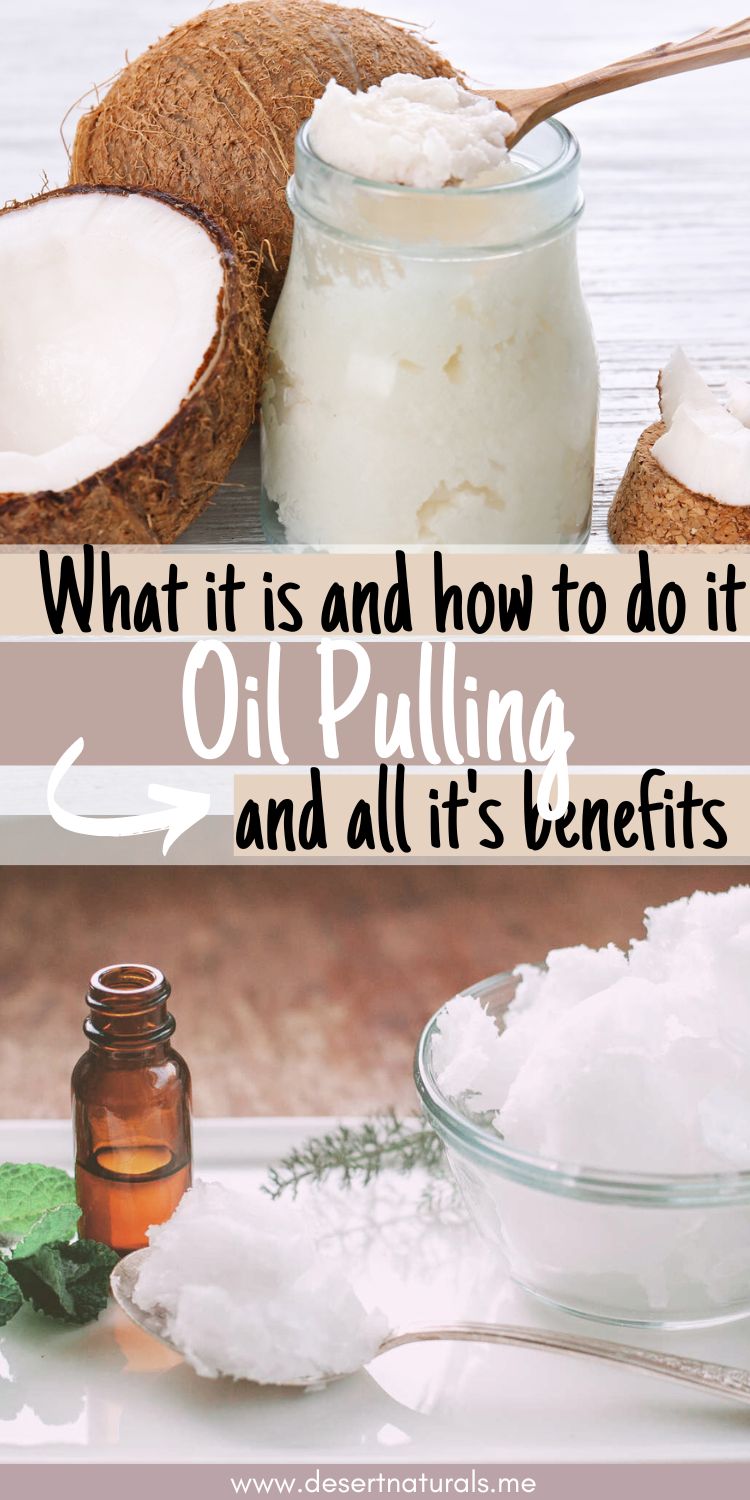
Holistic health supporters who have tried oil pulling also say that in addition to cleansing the mouth, oil pulling affords overall improved health, helping to cure a variety of minor yet annoying ailments such as dry skin, dandruff, mouth thrush, digestive troubles and much more.
However, whether or not oil pulling has any benefit depends on who you speak to. While the majority of dentists and medical doctors likely discount the idea, remember that there is a financial component to this for them. The more natural ways that we discover to keep ourselves healthy and well, the less we are likely to rely on trained medical professionals for conventional, modern-day treatments.
How Does Oil Pulling Work?
Now that you know about oil pulling and its purported health benefits, let’s explore the science behind this ages-hold holistic health practice. The theory behind oil pulling is as such. As with all oil and fat-based cleaners (think SOAP), the fat molecules from the oil attract toxins and pathogens, literally “pulling” them from your saliva. So now we’re delving a bit into the process of cleansing and how soap and soap-like substances work. Is oil soapy? Is soap oily? Is this the reason why oil pulling really does seem to improve our oral hygiene? Let’s explore the concept a bit further.
There is a very interesting article available online that explains the way soap works to get us clean.
“When grease or oil (non-polar hydrocarbons) are mixed with a soap- water solution, the soap molecules work as a bridge between polar water molecules and non-polar oil molecules. Since soap molecules have both properties of non-polar and polar molecules the soap can act as an emulsifier. An emulsifier is capable of dispersing one liquid into another immiscible liquid. This means that while oil (which attracts dirt) doesn’t naturally mix with water, soap can suspend oil/dirt in such a way that it can be removed. The soap will form micelles (see below) and trap the fats within the micelle. Since the micelle is soluble in water, it can easily be washed away.”
worldofmolecules.com
If soap is made of oil or a fatty substance, then it stands to reason that oil in the mouth, combined with the water of your saliva, probably works in the very same way. You might even say to the non-believers that this validates the practice of oil pulling as a legitimate method of purifying and detoxifying the mouth and gums.
Another part of the article on soap details what soap is made of:
“Soaps are mixtures of sodium or potassium salts of fatty acids which can be derived from oils or fats by reacting them with an alkali (such as sodium or potassium hydroxide) at 80°–100 °C in a process known as saponification.
fat + NaOH —> glycerol + sodium salt of fatty acid”
If soap must contain sodium in order to work, would it also stand to reason that if you add a sprinkle of mineral salt to your spoonful of oil before swishing, might that increase the effectiveness of your oil pulling mouth cleanse?
As both oil and salt are known to be safe, non-toxic substances, it may be worth experimenting by adding a bit of natural salt to your mouth swish routine to see what happens!
What is the Exact Method of Oil Pulling for Mouth Health?
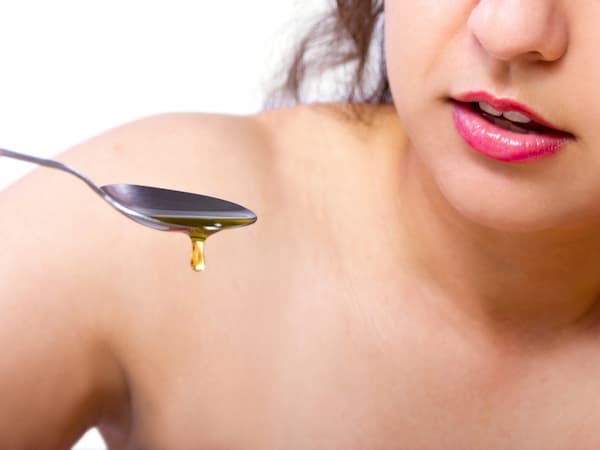
As oil pulling poses no danger to one’s health or safety, there are no hard or fast rules that you must follow to the tee. But for those in search of someplace to start, here’s a basic set of general instructions and helpful tips on how to oil pull:
Step 1: Take about a Tablespoon of oil into the mouth. If your mouth is small, then you can use a little less, and if it’s bigger, try a little more.
Step 2: Swish the oil back and forth and around and around, for approximately 15-20 minutes.
Step 3: When the oil’s constancy changes from thick and viscous to thin and foamy, and eventually watery, the process is complete. Spit out the oil into the garbage.
Step 4: Follow your oil pulling ritual with additional tooth cleansing. A small amount of baking soda on your toothbrush, with a few drops of water and even a couple of drops of peppermint oil, will remove any remaining particles or residue on your teeth and gums.
Step 5: Rinse your mouth with clean water.
Your tooth sanitizing, mouth purifying ritual is complete!
Oil Pulling Tips and Hints
- Oil pulling works best on an empty stomach, first thing in the morning. The process takes about 15-20 minutes, so if you’re concerned with having enough time to oil pull, then pop a spoonful of oil into your mouth just before you head into the shower. By the time you emerge, dry off and dress, your oil pulling process will be complete and you’ll have a fresher, sweeter, happier mouth.
People say that you should oil-pull first thing in the morning, but what’s stopping you from cleansing your mouth multiple times per day? It certainly can’t hurt, as oil pulling poses no health risk. Plus if you’re using oil pulling to treat problems like candida (yeast) in the mouth and digestive tract, a more frequent oil pulling ritual could actually hasten the yeast-cleansing process.
2. Avoid spitting your spent oil from oil pulling into the kitchen sink or toilet. This could clog your sink, and can negatively affect the functioning of your septic system if it’s done repeatedly for an extended period of time. It’s best to spit the oil into the trash bin than risk a hefty septic repair as a result of trying a new holistic health practice.
3. Some holistic health experts assert that 20 minutes, no more and no less, is the ideal window of time that you should spend oil pulling before spitting out the oil. At this time, the oil’s consistency will be thin and watery, yet still a bit foamy. Though clinical experiments on oil pulling are lacking, the idea is that this is just the right amount of time before the toxins in the oil would begin to be reabsorbed by the body. So you’d want to let the oil pulling process do its job, then get rid of the resulting waste rather than re-ingest it.
What Type of Oil Should I Use for Oil Pulling?
Pin for later
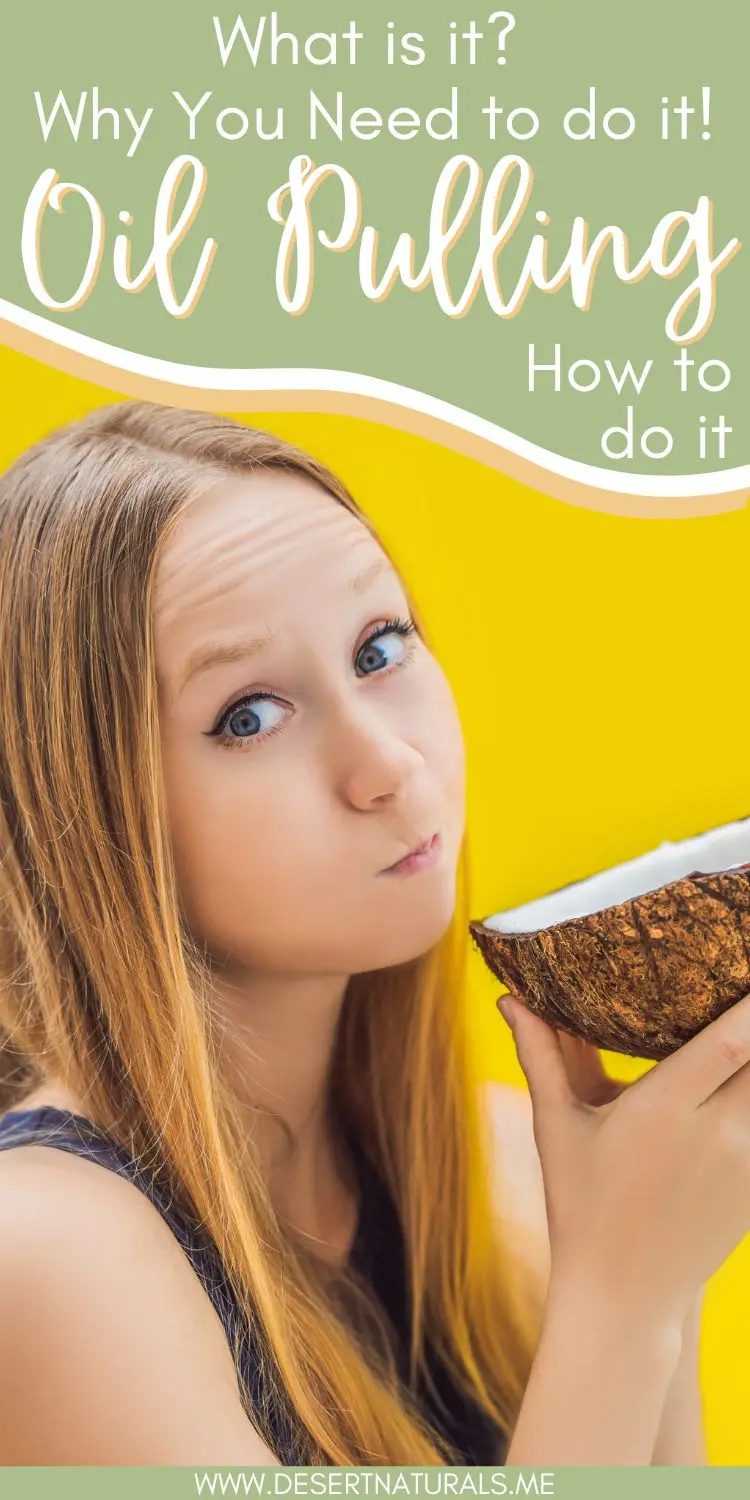
Any cooking oil that would be safe to consume is also safe to swish around in the mouth for an oil pulling cleanse. Additionally, the less refined the oil, the more health benefits it would seem to offer. Choose “virgin” or unrefined oils made from nuts or seeds, for the best oil pulling results. Avoid Omega-6 oils such as those made from corn, or “vegetable” oil which has been processed.
Some oils are claimed better than others in their ability to remove toxins in the mouth, reduce likelihood of developing cavities, and improve overall health.
Some oil pulling favorites:
Coconut oil.
In addition to its pleasant flavor which also makes it an oil pulling favorite, coconut oil is said to have superior cleansing properties, possibly because it’s a saturated fat. Internet research on coconut oil reveals that it is antifungal and antibacterial in nature, and can effectively kill the streptococcus mutans bacteria which cause dental cavities. So this is a great choice for people who want to reduce the amount of pathogens in their mouth and saliva by swishing oil as a regular practice.
Not only is coconut oil said to be beneficial when used as an oil pulling cleanse, but you can also eat it for health benefits. Coconut oil in the stomach is known to balance the gut flora, kill intestinal yeast, and promote healthy digestion. With better absorption of your food comes a whole host of health benefits, so there’s that to look forward to.
Just be sure that you aren’t eating the same oil that you used to oil-pull toxins from your mouth. The oil that you swish around during oil pulling should be spit into the garbage, not swallowed, as there is no need for you to ingest the dead bacteria and pathogens that you’re trying to purge from your system.
Olive oil.
Unrefined organic olive oil can be a good choice for people who want to reap the health benefits of oil pulling. Olive oil is antibacterial, antifungal and antiseptic in nature. When ingested as a regular part of the diet, olive oil has been shown to cut diabetes risk by half. It is also known for being able to reduce inflammation in the body and even kill cancer cells.
If you don’t care for the taste of virgin olive oil, just be aware that the unpleasant bitterness goes away after a few minutes of swishing.
Sesame oil.
Pure, unrefined sesame oil is the traditional choice that comes from ancient, Ayurvedic practices dating back thousands of years. However, this may have been a choice resulting from availability rather than for any other particular reason. Sesame oil is high in vitamin E and has a positive effect on the endocrine system.
It is also well-known for its ability to heal the skin, as you’ll see vitamin E advertised as the active ingredient in many skin creams, ointments and lotions. With all of its positive health benefits, vitamin E can not only be safely used in oil pulling, but it may also offer other benefits related to those described.
Essential Oils to Use When Oil Pulling
To boost your oil pulling benefits even more, you can add a few drops of essential oils. Here’s a few recommendations:
Adding essential oils can help with improved gum health, whiter teeth, and fresher breath!
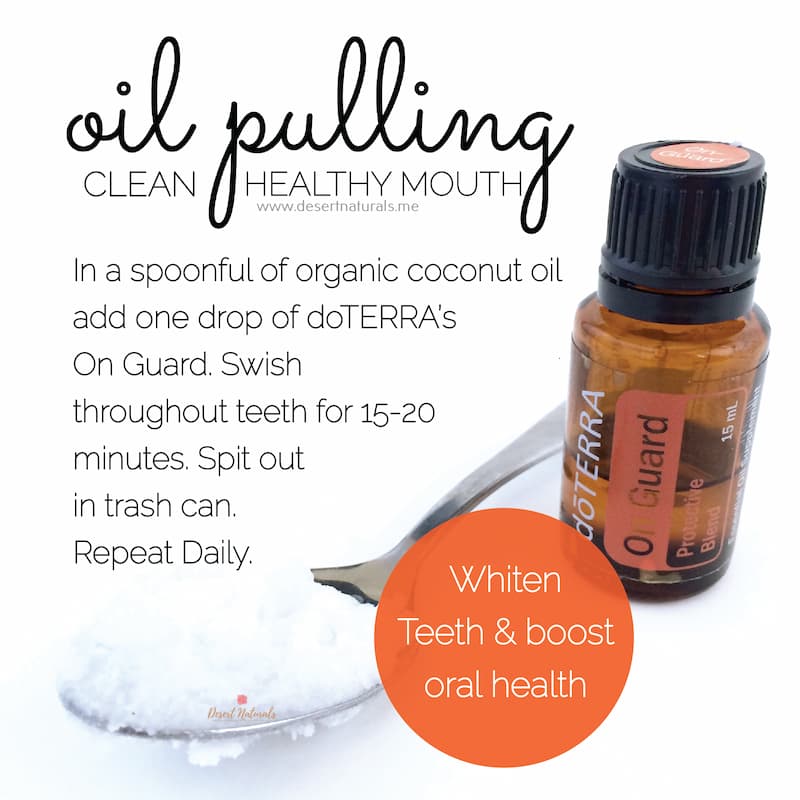
Are there any cautions or contraindications with oil pulling as a general health and hygiene practice?
The only risk posed with oil pulling is that there is a very minute chance that someone could accidentally inhale the oil particles and cause a pneumonia infection to develop in their lungs. However, this could just as easily happen over the course of ingesting any type of food or drink.
For this reason, you don’t want to be oil pulling when you’re in a rush, when you’re very busy with physical activities, or when you’re trying to talk to people (or they’re likely to be asking you questions and engaging you in conversation).
Also, you may want to avoid oil pulling when you’re having a cold, cough, respiratory allergies or any type of reaction that might cause you to gasp or cough while the oil is in your mouth.
To reduce the minor risk of inhalation of the oil when oil pulling, try to ONLY oil pull at a quiet time when you’re not likely to be talking, laughing, coughing or sneezing. Oil pulling while jogging, exercising or even just going for a walk, would be a bad idea.
What are the Benefits of Oil Pulling?
According to Ayurvedic health practitioner Kate O’Donnell of Boston, holistic benefits of oil pulling take a minimum of 3 months to be fully realized. As she explains it, oil pulling has an overall positive effect on the immune system. It takes time for the body to adjust due to the reduced pathogen load and for all systems (digestive, endocrine, immune, respiratory) to respond in kind. Kate’s personal experience successfully treating intestinal parasites using a combination of natural healing practices along with oil pulling, is what led her to become a proponent of this ancient practice.
What Ailments and Conditions Can Oil Pulling Treat?
While formal, clinical studies on the effects of oil pulling are lacking within the medical science community, a quick Google search will point you to many personal endorsements of oil pulling by people who have tried it and claim that oil pulling has had positive effects on their health. These personal testimonials include relief from the following:
Mouth infections. Oil pulling is said to lessen the likelihood of mouth infections by destroying the viruses, fungi and bacteria that live in the mouth and cause them.
Cavities. Coconut oil in particular is especially effective at killing the bacteria streptococcus mutans, which causes cavities to develop in the teeth. (Perhaps your dentist doesn’t want you to know this because it would put him or her out of business!)
Gum irritation and infection. Anything that removes pathogens from the mouth can greatly reduce the likelihood of developing gum irritations and resulting infections. Oil pulling is known by holistic health practitioners to help with this.
Mouth sores. The viruses and bacteria that cause cancer sores and other types of mouth sores to develop are no match for the germ-killing, immune-boosting effectiveness of oil pulling using a cold-pressed, organic nut or seed oil such as coconut or olive.
Dandruff and Other Fungal Conditions of the Skin. Dandruff is a fungal infection of the scalp. It is typically itchy, results in flaking and irritation, and can sometimes have an odor. Oil pulling, when done regularly, can destroy the yeast that cause dandruff to develop. It also can relieve other fungal conditions such as jock itch, vaginal yeast infections, mouth thrush and athlete’s foot, but reducing the overall number of yeast present in the body.
Other conditions that have been reported as responding positively to daily oil pulling for an extended period of months, include:
- Acne
- Intestinal parasites
- Digestive system imbalance
- Hormone imbalance
- Diabetes
- Asthma
- Allergies
- Hangover
Oil pulling is also said to be beneficial to the body in the following ways:
- Makes the skin softer and healthier
- Heals and prevents skin infections
- Improves the hair – softens, moisturizes
- Lessens the likelihood of catching colds and flu
- Whitens the teeth, freshens the breath
- Improves gum health
- Prevents cavities and heals existing cavities
- Improves intestinal health
- Helps curb hunger cravings which results in weight loss
- Reduces inflammation, especially in the stomach and intestines
- Lowers susceptibility to ear infection
- Improves allergies and asthmatic conditions
- Lowers the risk of diabetes
- Relieves hangover
- Helps lessen susceptibility to migraines and headaches
Can children do oil pulling safely?
If your child is old enough to feed him or herself, and can chew gum and swallow pills without choking, then it’s probably safe for him or her to try oil pulling. Please note, though, that the tendency for certain children to be physically more active, distractible or impulsive can make oil pulling risky for some kids. Also, if your child is affected by any sort of sensory processing disorder or neurological impairment, you should probably not encourage him or her to oil-pull as the risk for accidental inhalation increases. As mentioned, breathing in the oil particles can cause pneumonia to develop in the lungs. So please take care before teaching your child how to pull oil. If you have any doubt, consult with your pediatrician who will probably NOT advocate the practice.
Most children have better functioning immune systems than adults do, so if you want to help improve their health then you might try reducing sugar intake as this will discourage the growth of fungi, viruses and bacteria. A balanced, healthy diet and regular exercise, as well as sufficient amounts of sleep and rest should be enough to keep your child reasonably healthy without having to resort to oil pulling which kids may not even have the patience for.
Teenagers who are interested in bringing more healthy living practices into their daily routine may wish to try oil pulling, provided again that there is no increased risk of accidental inhalation of the oil for whatever reason.
Recipe for Oil Pulling
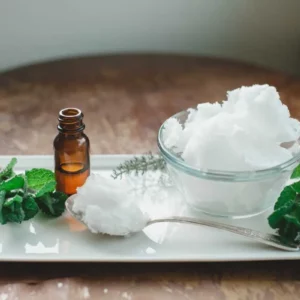
Oil Pulling with Essential Oils Directions
Ingredients
- 1 TBL Coconut Oil, Sesame Oil, Avocado Oil, or Olive Oil
- 1 drop doTERRA On Guard Essential Oil
- 1 drop Lemon Essential Oil
- 1 drop Eucalyptus Essential Oil
Instructions
- Combine all of the oils into a glass cup
- Swish the mixture in your mouth for 10 – 20 minutes.
- Spit into the trash.
Notes
DISCLAIMER: The above information is not intended to serve as medical advice and should not be considered medical treatment for any physical condition or illness. If you are experiencing symptoms of any kind, please consult with your physician.
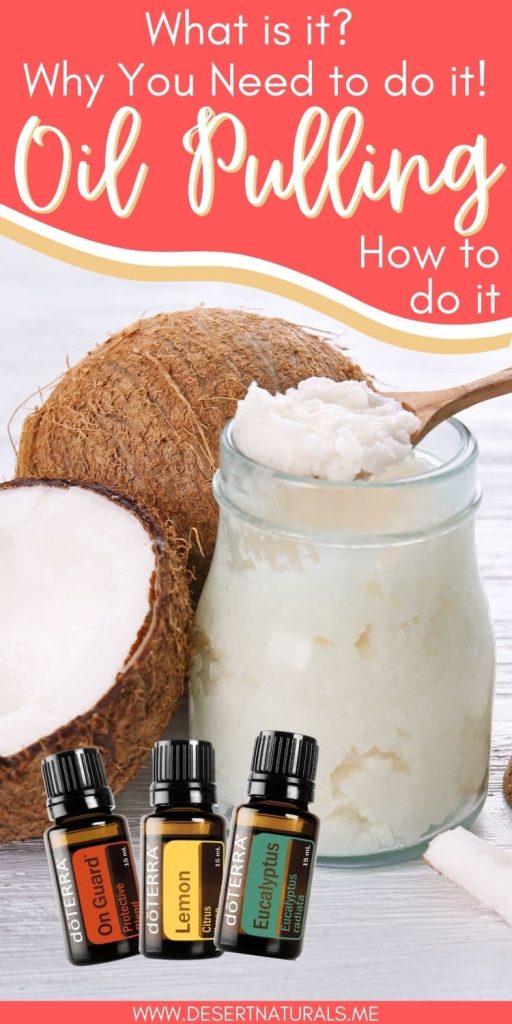
Before You Go, See What’s New On The Blog

Dawn Goehring
Dawn Goehring is the founder of Desert Naturals where she writes educational articles on essential oils, DIY’s on natural beauty products, homemade cleaners, and provides related essential oil accessories like planners, trackers, tshirts, and custom designed essential oil storage. She has been featured in articles on Porch.com, Redfin.com, MommyOnPurpose and more.
Dawn has earned an aromatherapist degree and has earned a doTERRA essential oil specialist certification which is a fancy way of saying she has learned a lot about the chemistry of essential oils and how they work in the body.

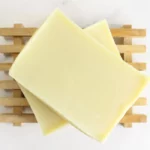
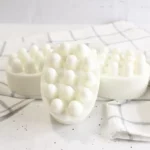
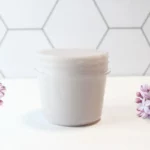
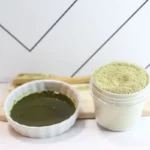
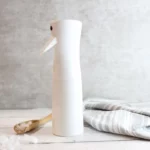
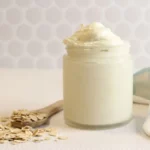
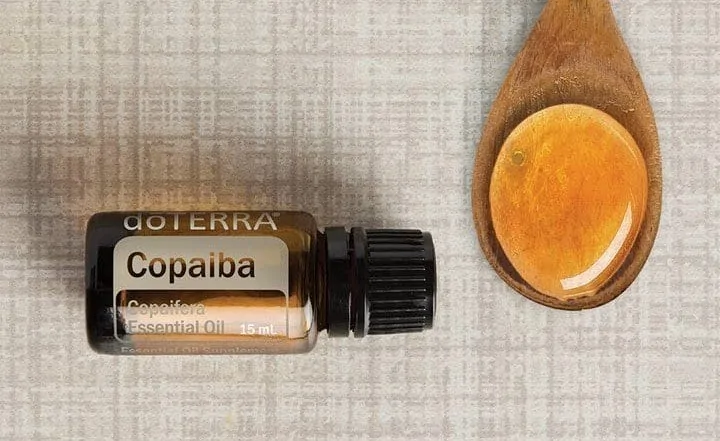
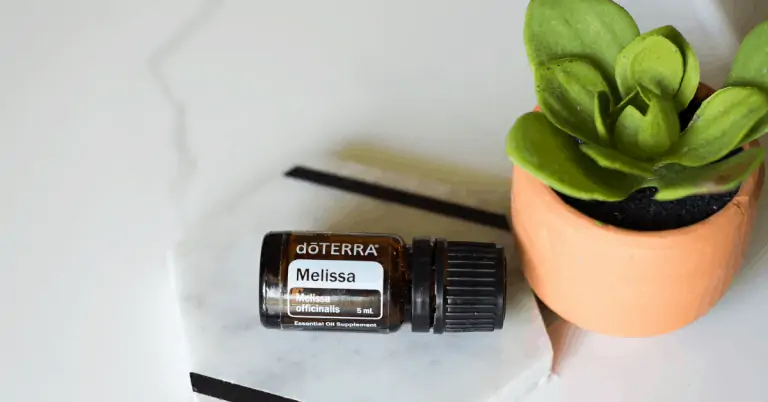

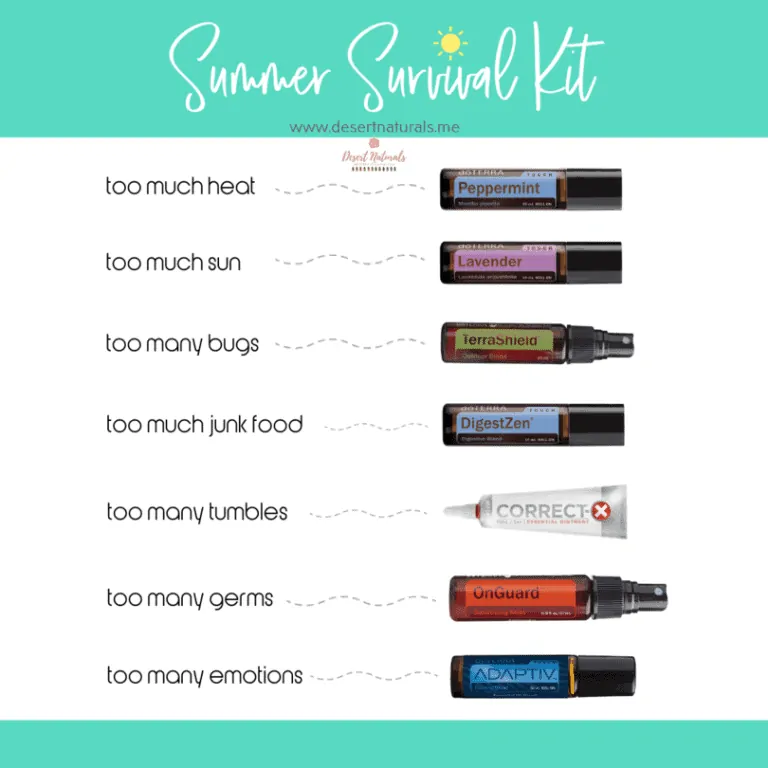
Just starting to learn about this. Definitely need to whiten my teeth. I would love to do it in a healthy way.